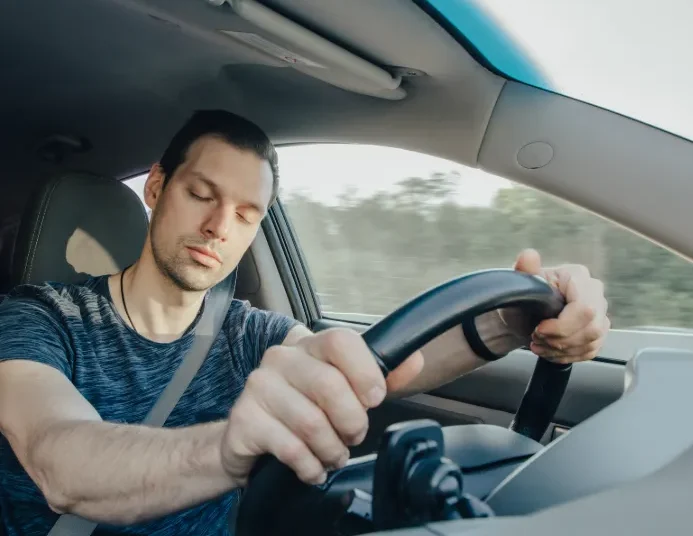Every day, millions of Americans get behind the wheel, whether for a short commute or a long road trip. As daily travel times increase, so does the risk of unsafe driving behaviors. Among the most dangerous are drunk, drowsy, and distracted driving—three forms of impairment that threaten everyone’s safety on the road. Although each has distinct causes, all can result in devastating and often fatal outcomes.
Drunk Driving: The Cost of Alcohol-Impaired Decisions
It only takes one drink for alcohol to begin affecting your body’s coordination and reaction time. Even with a blood alcohol concentration (BAC) well below the legal limit of 0.08%, drivers may experience slower reflexes and reduced judgment. Alcohol interferes with vision, focus, and motor control, making it difficult to stay within a lane or respond quickly to changing traffic conditions.
The higher a person’s BAC rises, the more severe these effects become. Speech may slur, concentration fades, and the risk of falling asleep or losing control increases. Tragically, countless accidents each year occur because drivers underestimate the impact of “just one more drink.”
Drowsy Driving: Fatigue Behind the Wheel
Sleep deprivation can be just as dangerous as alcohol consumption. When drivers are tired, their ability to make split-second decisions and react to hazards diminishes significantly. Studies have shown that staying awake for 24 hours impairs driving ability as much as having a BAC of 0.10%, which is above the legal limit in every U.S. state.
Drowsy driving often results from lack of sleep, working long or irregular shifts, or untreated sleep disorders such as sleep apnea. Warning signs include drifting from your lane, missing traffic signs, yawning excessively, or struggling to keep your eyes open. Drivers who ignore these symptoms risk losing focus entirely—sometimes leading to catastrophic single-vehicle crashes.
Distracted Driving: The Modern-Day Epidemic
Unlike alcohol or fatigue, distractions can affect anyone, anytime. Texting, eating, changing music, or adjusting navigation systems are all examples of behaviors that divert attention from the road. Even glancing at a phone for a few seconds can be deadly; at 55 miles per hour, a car covers the length of a football field in just five seconds.
The rise of smartphones has made distracted driving an increasingly serious issue, particularly among younger drivers. Taking your hands off the wheel or your eyes off the road for even a moment drastically increases the chance of a collision.
Understanding the Consequences
Each type of impaired driving comes with severe physical, emotional, and financial repercussions. Drunk driving remains one of the deadliest causes of accidents, accounting for roughly 28 fatalities every day in the U.S. Drowsy driving leads to tens of thousands of crashes and hundreds of deaths annually, while distracted driving causes thousands of fatalities and hundreds of thousands of injuries each year. Beyond the numbers, every statistic represents a life changed—or lost—because of a preventable choice.
How to Prevent Impaired Driving
Preventing Drunk Driving:
Plan ahead before consuming alcohol. Designate a sober driver, arrange for a taxi or rideshare, or stay overnight if needed. If you notice someone attempting to drive after drinking, step in and help them find a safer alternative. Even as a sober driver, stay vigilant—especially at night or on weekends when drunk driving incidents are more common.
Preventing Drowsy Driving:
Prioritize rest before long trips and take regular breaks during extended drives. If you start feeling tired, pull over in a safe area and rest. Don’t rely on caffeine to stay awake—it’s a short-term fix, not a solution. Drivers with persistent fatigue should consult a doctor for possible sleep disorders.
Preventing Distracted Driving:
Silence or set your phone to “Do Not Disturb” mode before starting your trip. Program your GPS and select your playlist before hitting the road. Avoid multitasking—eating, grooming, or adjusting controls can wait until the vehicle is stopped. If an urgent situation arises, pull over safely before addressing it.
The Role of Technology
While autonomous and semi-autonomous vehicles are being developed to reduce accidents caused by human error, they are not yet a complete solution. Current systems can assist with braking or lane-keeping but still require alert and responsible drivers. Overreliance on these technologies can create a false sense of security, which may lead to more distraction rather than less.
Final Thoughts
Drunk, drowsy, and distracted driving are different in cause but identical in consequence—they all endanger lives. Safe driving begins with awareness, preparation, and accountability. By making responsible choices before getting behind the wheel, every driver can help prevent tragedy and ensure safer roads for everyone.
















